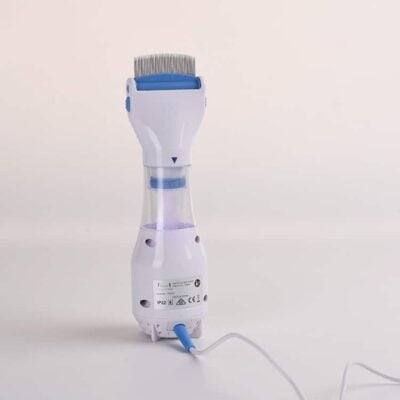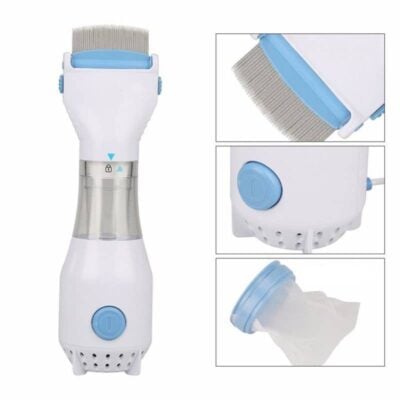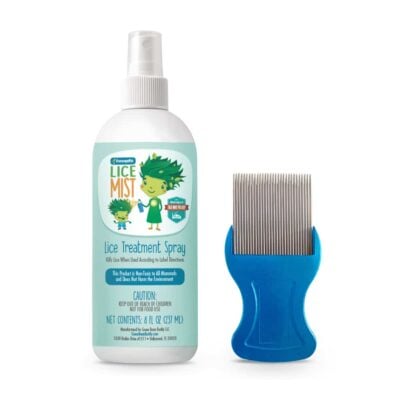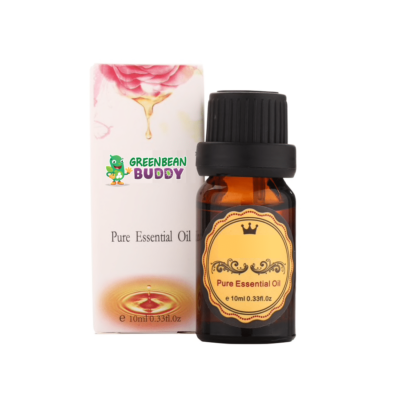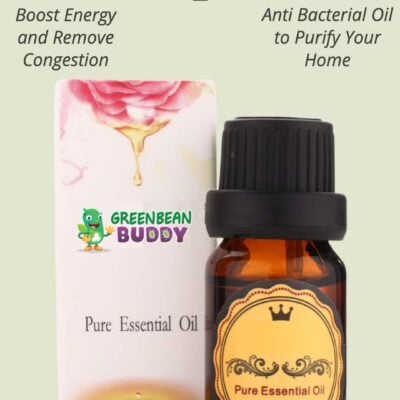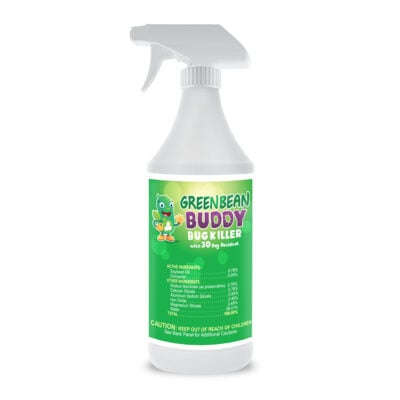What do lice look like
To assist you on identifying if what you are having are head lice or not. This page will help you know what head lice look like in brown hair, blonde hair, on comb and we will also discuss the life cycle so you will have an idea what stage you are in.
Keep in mind that it is better to use a homeopathic lice treatment if you are thinking of treating your head lice or your other family member to ensure your safety.
Lice Solutions Being Used by School Boards
-
- Out of Stock
Head and Body Lice Spray, Homeopathic Lice Treatment For Kids and Adults, 8oz with Nit Comb
-
$29.99$19.99
-
What do head lice look like in your hair
Share with friends and family this lice mist visual guide by clicking on your favorite social network below. This will help others know what to look for, thanks!
Head lice has 3 forms and to be able to identify what you are having it is important to know their different characteristics for each form.
First form is called nits. Nits are the egg of head lice and are laid by adult female louse. Nits can usually be found attached on hair shaft and can be a bit hard to remove. They require body heat for incubation so you can usually found nits close to the scalp.
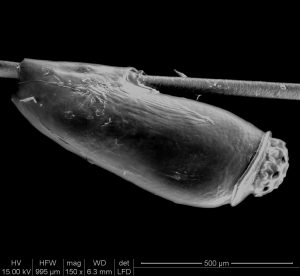
- Size: 0.8 millimeter by 0.3 millimeter
- Shape: Oval
- Color: Yellow to white
- Location: Within 6 millimeter of the scalp
- Duration: Nits take six to nine days to hatch
Second form is called nymphs. When an egg hatches, it releases a nymphs. The nit shell that is attached to the hair shaft will then turn to dull yellow color. Nymphs can be mistaken as an adult louse but nymphs are smaller. Nymphs molts three times before it becomes an adult.

- Size: Variable but about the size of a pinhead
- Shape: Same shape as the adult louse
- Color: Yellow to rust-colored
- Location: Close to the scalp, especially behind the ears and at the neckline
- Duration: Nymphs become adults after about seven days
Third form is adult. Adult lice feed five times per day piercing your skin with its claws, injecting an irritating saliva and then sucking your blood. Their color changes to a rust color after feeding but does not become engorged like ticks. They use their hook-like claws to hold onto the hair and are active and can travel quickly.
- Size: The size of a pinhead. Female louse is larger than the male
- Shape: Oval with three legs on each side and claws at the end of each leg
- Color: Rust
- Location: Close to the scalp, can be found especially behind the ears and at the neckline
- Duration: Adult louse can live up to 30 days on a human’s head
- Reproduction: Adult female can lay up to eight nits per day.
What do head lice look like in brown hair
If you are a person with brown hair then this part is for you. Nits, nymphs and lice is a bit harder to identify when your hair is black or brown because it can sometimes be mistaken as something else like dirt or dandruff.
Picture above is an example of a severe infestation but that’s the idea of how nits look like on a brown hair. It can appear white or yellow in color. It can be mistaken as a dirt or dandruff but nits are hard to remove so use that as a guide.
What do head lice look like in blonde hair
For those who have blonde hair, this is how it looks like. Nits can look like small sesame seeds. Lice can look dark if they had already fed but can also look like invisible because their body is clear.
What do head lice look like on nit comb
One way to remove head lice and nits is to use a comb. There are different kinds of comb you can use. One is the traditional comb which can be made of plastic or wood that has small gaps on the tooth.
The new comb that is being raved about now because of how good it can get everything is a metal comb made specifically for removing head lice.
Here is what head lice look like on nit comb:

The thing with this comb are the grooves for each tooth unlike the traditional nit comb. This grooves effectively get the nits, nymphs and lice.
Are head lice black in color
Color of lice is not always black. Adult lice and nymphs can be of grayish white or tan. If you will closely look at an adult louse, you may be able to notice that its abdomen is color red. That’s the human blood it sucked while feeding.
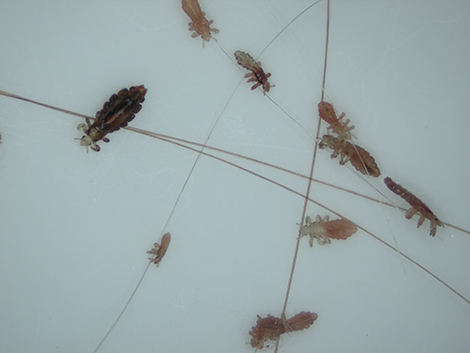
Nits on the other hand can look like a tiny yellow, tan or brown dots that is attached on the shaft of the hair. It can look like a flat speck with small tail which is just a residue.
Knowing if your lice is a nit or adult
Life cycle of head lice has three stages: egg, nymph, and adult

First stage is nits. This is the egg of the lice and they are cemented on the hair shaft near the scalp.
Second stage is nymphs. When the egg hatches, it releases a nymph. It looks like an adult louse but much smaller and about the size of a pinhead.
Last stage is adults. Lice in adult stage is about the size of a sesame seed and has 6 legs. Female adult lice are usually larger than males and can lay up to 8 nits per day.
Treatment of head lice infestation
There are a lot of ways to treat head lice but not all are safe to use. Children are the usual carrier of head lice and it is important to use a gentle treatment but effective to make sure that you don’t compromise their health.
Green Bean Buddy Lice Treatment Spray is a homeopathic treatment and is child safe. The formula is naturally derived and re-engineered using a polypeptide molecule from soybean oil to dissolve the lice outer layer shell. The lice will die within minutes thru dehydration without the need of using any harmful pesticides.
The ingredients of this homeopathic lice treatment are labeled by the EPA as GRAS (Generally Regarded as Safe) and is 100% effective, safe for humans, pets and environment.
Most lice treatment has pyrethrin but Lice Mist contains no pyrethrin and is homeopathic, bio-engineered so that lice are unable to avoid death from immunity to the ingredients.
Head lice can be easily spread and can affect your entire household. Lice can be transferred thru backpacks, scarves, couches and bed. To avoid that from happening, you can use Green Bean Buddy bed bug spray that has residual treatment. It is not limited to killing bed bugs and proven to kill other kinds of pest as well.
Questions? We are here to help!
If you have any questions or something is bugging your mind, don’t hesitate to message us by commenting below.

